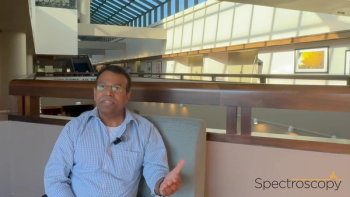
The Challenges of Applying Microfluidic Techniques Widescale
A recent study from Jiangsu University highlighted the challenges associated with the real-time application of microfluidic technology. We summarize their research here.
Detecting foodborne pathogens is important to ensuring food safety for global consumers. Recently, a research team from Jiangsu University explored this issue, highlighting the role of Raman spectroscopy and microfluidic platforms in this space. Published in Food Research International, the study, which was led by Zhiming Guo, introduces a new approach for detecting foodborne pathogens that involves integrating microfluidic platforms with Raman spectroscopy (1).
Foodborne pathogens remain a critical threat to public health, with outbreaks leading to illness, economic loss, and even fatalities. Detecting these pathogens quickly and accurately is key to preventing contaminated food from reaching consumers (1). Current methods for pathogen detection, while effective, often face challenges related to cost, complexity, and the speed of analysis (1). Microfluidics is a new field that can alleviate some of these concerns (2).
When microfluidics is combined with Raman spectroscopy, the result is a highly sensitive tool for pathogen detection. This integrated system offers several advantages, such as the ability to detect multiple pathogens simultaneously (multiplex detection), small sample volume requirements, and the portability of the equipment, which makes it ideal for use in diverse food environments, from farms to processing plants (1).
According to Guo and his team, microfluidic platforms are versatile in their approach to capturing pathogens, employing techniques such as optical trapping, electrical trapping, mechanical trapping, and acoustic trapping (1). These methods are all used to capture and identify microbial cells correctly and accurately. These techniques are effective because they can detect minute concentrations of pathogens (1). As a result, its application in the food industry makes logical sense, because of the potential of even small contamination leading to severe public health consequences.
Although the potential of Raman spectroscopy-based microfluidic platforms is vast, the review also outlines several challenges that need to be addressed for widespread implementation. One of the most significant obstacles is the complexity of food matrices—foods are made up of diverse components that can interfere with detection processes (1). For example, raw or processed food samples often contain fats, proteins, and carbohydrates that may mask the presence of pathogens or affect the efficiency of detection (1).
Modular microfluidic systems, according to the authors, can alleviate these concerns.These systems would break down the detection process into separate stages, with each module dedicated to a specific pretreatment step, such as filtering or concentrating samples (1).
One of the important elements in the successful application of Raman-based microfluidic platforms is surface-enhanced Raman spectroscopy (SERS). SERS amplifies the Raman signal by using nanostructured materials like metallic nanoparticles, making it highly sensitive to low concentrations of analytes—such as the pathogens being targeted (1,3). However, integrating these SERS substrates into microfluidic channels is a complex challenge. The nanoparticles must be correctly placed and aligned within the microfluidic channels to optimize the detection process (1).
In addition to the physical challenges, real-time monitoring of foodborne pathogens requires sophisticated computational methods to interpret the data generated by the Raman spectroscopy (1). Food matrices are complex and so are pathogens, and as a result, it requires the spectral data to be processed and analyzed accurately and efficiently. The authors suggest machine learning (ML) techniques, such as deep learning and support vector machines (SVMs), which can improve pathogen detection accuracy (1). These computational tools can help distinguish between harmless background noise and true analyte signals indicating contamination (1).
The review concludes that further research and development in this area could lead to standardized and scalable platforms that offer real-time, point-of-care diagnosis for foodborne pathogens. As the technology continues to improve, it is possible that many of the challenges highlighted with the widespread adoption of microfluidic devices can be resolved.
References
- Jayan, H.; Yin, L.; Xue, S.; et al. Raman Spectroscopy-based Microfluidic Platforms: A Promising Tool for Detection of Foodborne Pathogens in Food Products. Food Res. Int. 2024, 180, 114052. DOI:
10.1016/j.foodres.2024.114052 - Niculescu, A.-G.; Chircov, C.; Bîrcă, A. C. Fabrication and Applications of Microfluidic Devices: A Review. Int. J. Mol. Sci. 2021, 22 (4), 2011. DOI:
10.3390/ijms22042011 - Horiba Scientific, What is Surface-enhanced Raman Scattering (SERS)? Horiba.com. Available at:
https://www.horiba.com/esp/scientific/technologies/raman-imaging-and-spectroscopy/raman-explained-faq/what-is-surface-enhanced-raman-scattering-sers/#:~:text=SERS%20provides%20detailed%20information%20about,down%20to%20single%20molecule%20levels . (accessed 2024-09-23).
Newsletter
Get essential updates on the latest spectroscopy technologies, regulatory standards, and best practices—subscribe today to Spectroscopy.





